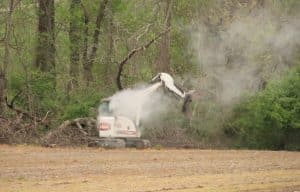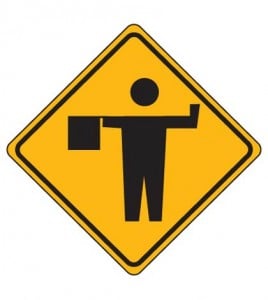Recycling explained
Some in the community have expressed confusion about how recycling in the area is handled, with a few voicing concerns about whether or not recyclables are simply thrown in the regular trash after they’re picked up.
Tim Scheibe of Reliable Sanitation offered some perspective into how recycling collection works as well as what rules Monroe County residents need to abide by if they want their recycling handled properly.
As Scheibe described, the rules for recycling can largely be summarized by two key words.
“The two big buzzwords right now are loose and clean,” Scheibe said. “And when we say loose, that means that they cannot be bagged. They need to just be put in the recycling totes without being bagged in either kitchen bags, grocery bags or your large trash bags.”
Many might be accustomed to keeping their recycling in bags just like their trash, either for personal convenience or because it seems like it would be more convenient for handling at the recycling center.
But Scheibe explained those bags can cause a great deal of trouble during the recycling process, and it is far better to simply keep everything in a recycling bin loose.
“The recycling people do not know what’s inside that bag,” Scheibe said. “For all they know, it’s trash, and they don’t wanna take trash. And then the second thing is those bags get caught in the conveyor belt system that is in the recycling center, and it really causes havoc.”
He further explained that the “clean” rule has two components, the first of which is simply ensuring that whatever is put in the recycling bin isn’t filthy.
Scheibe said that things should be rinsed out and reasonably clean. Pizza boxes, for example, might have some stains or sauce left on them, but so long as they don’t have a whole pizza slice inside, they should be good to go in the recycling.
The other, potentially even more important aspect of the clean rule is ensuring that everything put in the curbside recycling is actually meant to go in the bin.
There are six types of materials that can go in the curbside recycling. Among them are aluminum drinking cans, tin cans – such as soup or vegetable cans – and paper, including notebook paper, letters and envelopes.
Corrugated cardboard can be placed in the recycling tote as well, though Scheibe said particularly large boxes for televisions or other large appliances should be broken down.
Plastics can also go in the recycling, though Scheibe noted that this specifically means thin plastics. While toys, coat hangers or other such thick plastics can’t be accepted as they melt at a different temperature, thin plastics such as packaging, straws or other kitchen plastics can be included.
Glass – specifically bottles and jars as opposed to paned glass – is technically the sixth item on the list, though Scheibe said it’s generally not a good idea to place them in the bin with the rest of the recycling.
“The problem with that is if that glass breaks in the process, then it does not get recycled,” Scheibe said. “The recycling system does not have the ability to identify what it is if it’s really small, little pieces of glass. It has to be whole shards and bottles. And for it to make it through the recycling system without being broken is pretty rare.”
This, Scheibe went on to explain, is simply due to how materials are sorted on the conveyor belt at the recycling center.
For those residents hoping to get rid of their glass in an environmentally friendly way, Scheibe said it’s really best to bring any bottles to the Monroe County Recycling Center at 901 Illinois Avenue in Waterloo to make sure they stay whole.
Some items, like scrap metal, can technically be recycled, but shouldn’t go in the curbside recycling. Such items might instead be recyclable at the recycling center.
A full list of items which can be disposed of or recycled at the recycling center can be found on the Reliable Sanitation website.
Items not on the list of six simply don’t belong in the recycling, and if you find yourself questioning whether or not something belongs, Scheibe said to leave it out.
“Our rule of thumb is if you question whether or not this is a recyclable item or a trash item, trash it,” Scheibe said. “What’s on that list is pretty well black and white, and if you don’t know whether something is recyclable or not, then it’s not worth the contamination.”
Contamination is the other big word for the recycling process. It refers to anything in the curbside recycling that’s not meant to be there, including landscape waste, bagging or any household garbage.
Scheibe explained that contamination can impact whether or not a truckload meant to be recycled actually gets recycled.
After doing some separation at the recycling center, Reliable Sanitation then takes its recyclables to Southside Recycling in St. Louis, and if the amount of contamination in the load is too high – greater than 5 or 10 percent – then Reliable Sanitation gets fined.
“We are at the mercy, really, of the public to make sure that they have little or no contamination in their recycling,” Scheibe said.
While he noted that Reliable Sanitation still takes recycling over if contamination is in the 20 percent range, it’s still important to minimize contamination in order to make sure recyclable items still get recycled.
Ultimately, as Scheibe said, it is up to Monroe County residents to make sure their recycling is sorted appropriately.
“We are committed to doing this, and we want to work with the community on this,” Scheibe said.
For more information, visit reliablesanitationservice.com or call the Reliable Sanitation office at 618-939-3333.






